[fusion_builder_container hundred_percent=”no” hundred_percent_height=”no” hundred_percent_height_scroll=”no” hundred_percent_height_center_content=”yes” equal_height_columns=”no” menu_anchor=”” hide_on_mobile=”small-visibility,medium-visibility,large-visibility” status=”published” publish_date=”” class=”” id=”” background_color=”” background_image=”” background_position=”center center” background_repeat=”no-repeat” fade=”no” background_parallax=”none” enable_mobile=”no” parallax_speed=”0.3″ video_mp4=”” video_webm=”” video_ogv=”” video_url=”” video_aspect_ratio=”16:9″ video_loop=”yes” video_mute=”yes” video_preview_image=”” border_size=”” border_color=”” border_style=”solid” margin_top=”” margin_bottom=”” padding_top=”” padding_right=”” padding_bottom=”” padding_left=””][fusion_builder_row][fusion_builder_column type=”1_1″ layout=”1_1″ spacing=”” center_content=”no” link=”” target=”_self” min_height=”” hide_on_mobile=”small-visibility,medium-visibility,large-visibility” class=”” id=”” background_color=”” background_image=”” background_position=”left top” background_repeat=”no-repeat” hover_type=”none” border_size=”0″ border_color=”” border_style=”solid” border_position=”all” padding_top=”” padding_right=”” padding_bottom=”” padding_left=”” margin_top=”” margin_bottom=”” animation_type=”” animation_direction=”left” animation_speed=”0.3″ animation_offset=”” last=”no”][fusion_text columns=”” column_min_width=”” column_spacing=”” rule_style=”default” rule_size=”” rule_color=”” hide_on_mobile=”small-visibility,medium-visibility,large-visibility” class=”” id=””]
The February newsletter of the Canadian Construction Association includes an update on its ongoing campaign to remove “community benefits requirements as a condition of procurement”. According to the article, the CCA has been meeting with (lobbying) members of parliament and the senate to “educate” them on the negative implications of community benefit agreements. They are pleased with the “wide range of support” they’ve received.
I want to look at some of the issues raised by the CCA.
[/fusion_text][fusion_imageframe image_id=”4444″ max_width=”” style_type=”none” blur=”” stylecolor=”” hover_type=”none” bordersize=”” bordercolor=”” borderradius=”” align=”center” lightbox=”no” gallery_id=”” lightbox_image=”” alt=”” link=”” linktarget=”_self” hide_on_mobile=”small-visibility,medium-visibility,large-visibility” class=”” id=”” animation_type=”” animation_direction=”left” animation_speed=”0.3″ animation_offset=””]http://bta.ca/wp-content/uploads/2019/02/community-benefits-agreements-stakeholders-360.jpg[/fusion_imageframe][fusion_separator style_type=”none” hide_on_mobile=”small-visibility,medium-visibility,large-visibility” class=”” id=”” sep_color=”” top_margin=”20px” bottom_margin=”” border_size=”” icon=”” icon_circle=”” icon_circle_color=”” width=”” alignment=”center” /][fusion_text columns=”” column_min_width=”” column_spacing=”” rule_style=”default” rule_size=”” rule_color=”” hide_on_mobile=”small-visibility,medium-visibility,large-visibility” class=”” id=””]
Defining community benefits and the bidding process
The CCA reassures us that its “members already pro-actively create community benefits”. But they “stand firmly against any measures that would dilute or create uncertainty within the competitive bidding process.”
One advantage of community benefit agreements as they are being used in jurisdictions like British Columbia (and are proposed for Alberta) is that community benefits are defined. They are defined in terms of goals that are set by the contracting government. The goals can align with government policies and programs, which is actually the government’s job. They are also defined in terms of the requirements set for the bidding contractors. That actually levels the playing field and creates more certainty for bidding contractors. For instance, a contractor can’t bid low using a cheaper labour source if there are minimum requirements for such things as wages, using in-province and local labour, training apprentices, and hiring union workers. Other industry and public stakeholders, including local governments, unions, and Indigenous peoples, know the ground rules and can better participate in the process as well.
Community benefit agreement requirements may specify the rules for
- wage agreements
- targeted hiring of apprentices, disadvantaged groups, and union labour
- sub-contracting to local small businesses for construction, services, and supply
- environmental impact standards and monitoring
- Indigenous consultations
- development of community infrastructure projects
- monitoring and fulfillment requirements.
By definition then, I would argue that community benefit agreements are open and transparent, unlike current contracting processes, which actually do create uncertainties for all stakeholders, including contracting governments, contractors, and the paying public.
Adding extra value to contracts
The CCA also worries that community benefit agreements ask contractors to add undefined “extra value” to their bids. Being asked to add “extra value” to a bid is pretty much what all contractors promise to do. Almost every contractor will attempt to establish the unique, added value they bring in terms of cost, resources, and various intangibles (such as a commitment to excellence). The difference here might be the need to establish extra value as it relates to the goals of a community benefits agreement and, perhaps, to quantify the value more rigorously. That kind of “extra value” can only benefit the public purse, something most taxpayers will applaud.
Training apprentices
As the CCA notes, Canada is facing a shortage of skilled building trades workers. In Alberta, BuildForce Canada estimates a labour force gap of some 21,100 workers in the construction and maintenance industries by 2028. It notes that an “ongoing commitment to training and apprenticeship development will be necessary to ensure there are sufficient numbers of qualified tradespeople to sustain a skilled workforce over the long term.” BuildForce Canada identifies greater participation of non-traditional and underemployed populations, including women, new Canadians, and Indigenous people, as one way to address this need.
The CCA worries, however, that adding in requirements to train women and new Canadians“may lead to project delays and increased costs; delaying or depriving the community of the necessary infrastructure to improve their lives”. Apparently the CCA feels differently about Indigenous workers, but if it is an Indigenous woman, well, I’m not sure. Somehow, I don’t think unemployed women and new Canadians would agree with the CCA. And local communities tend to like the idea that they have citizens who are highly skilled (which attracts business) and earn good middle-class incomes (which pays taxes).
The CCA is particularly worried that community benefit agreements may require that workers belong to specified unions. The CCA may be referring to British Columbia, which requires that workers on major public infrastructure projects paid for with public dollars to be a member of or join a union while working on the project. As I have previously noted, similar requirements in Alberta are unlikely. So community benefit agreements will be different in different provinces.
Right now, the reality for many contracted infrastructure projects is the reverse. Some contractors freeze out union labour or opt for the friendly handshake of company-created unions like CLAC rather than dealing with the building trades unions.
I think we should look at the issue of hiring union a little differently and ask whether unions bring added value to community benefit agreements.
Pressure is being applied to get contractors to train new apprentices and to hire minority and disadvantaged workers. Why? Because current practices aren’t preparing Canada for its looming labour needs. Who can help make up the difference?
Canada’s Building Trades Unions represents more than 500,000 workers in this country. CBTU’s affiliated local unions have invested more than $650 million in training facilities. Many of the best training facilities in Canada have been funded by BTA’s affiliated unions. Building trades unions proudly provide the best trainers, the best training, the best job site safety records, and the most highly skilled workers.
Unions also lead the way when it comes to supporting the hiring of underrepresented populations. Nationally, Canada’s Building Trades Unions has vigorous programs in place to recruit women, Indigenous peoples, and new Canadians, as well as Canadian Forces personnel. Those programs aren’t just talk and they didn’t start because of any government or community benefit requirement. They represent core values of the building trades unions. And the national programs are replicated at a provincial level. The BTA, for instance, partners with
- Build Together to support the mentoring of women in the building trades
- Trade Winds to Success to increase the number of Indigenous workers in the building trades
- Helmets to Hardhats to transition Canadian Forces personnel to the building trades.
The Case for Community Benefit Agreements
The CCA will no doubt continue its efforts at “educating the government both at a departmental level as well as at a parliamentary level” to the “negative implications” of community benefit agreements for procurement.
I suggest a different perspective. Repeated problems on infrastructure projects have already educated governments and the taxpaying public when it comes to problems with current procurement practices. The process is flawed. Too many major infrastructure projects are interminably delayed (witness the Trans Mountain Pipeline Expansion project) or, once approved, run over budget and miss deadlines. Too often, cheaper labour is brought in to lower costs. The results are a lowering of skills, loss of efficiency, failure to train new apprentices, higher future maintenance costs, and a shortfall of skilled workers.
Major infrastructure projects provide a great opportunity to train Canada’s and Alberta’s next generation of skilled trades workers. Instead of rinsing and repeating previous flawed processes, let’s give community benefit agreements the serious attention they deserve. We could even see what union labour can accomplish.
[/fusion_text][/fusion_builder_column][/fusion_builder_row][/fusion_builder_container]

